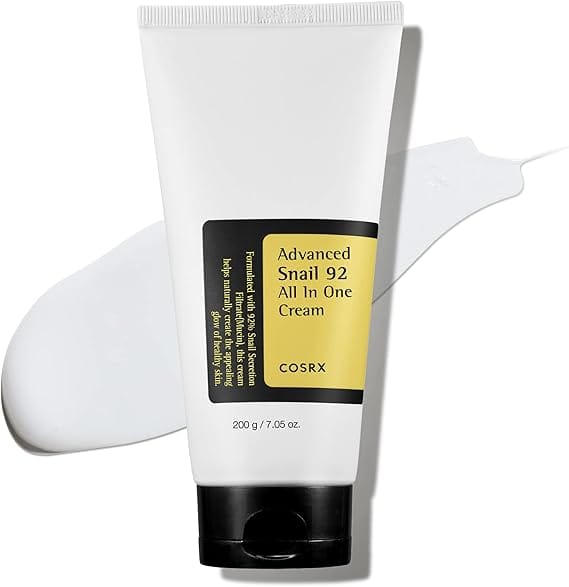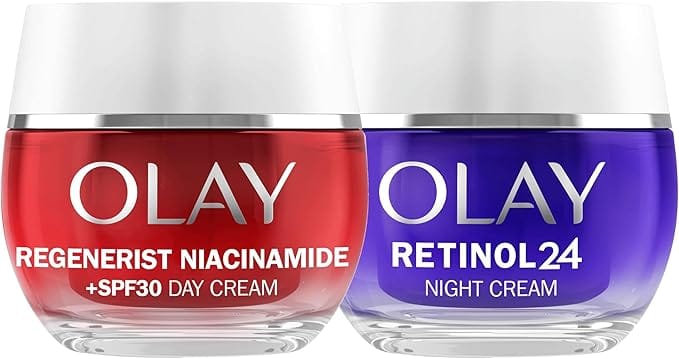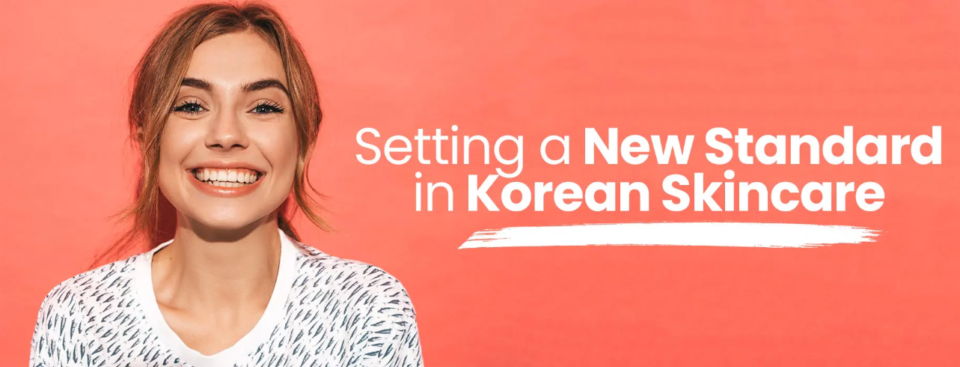

Generating Results That Speak for Themselves. Korean skincare products have been making waves in the global beauty industry for over a decade. The philosophy and ingredients behind this movement are prized among those seeking the highest level of skincare. At Seoul Ceuticals, we have researched and harnessed the best aspects of K-Beauty to create a skincare line that truly delivers on the promise of flawless, glowing skin.
Our high standards and potent formulations about Skin Care have generated national press and the attention of top beauty influencers. But most importantly, they are delivering brighter, healthier, more youthful looking skin to thousands of delighted customers.
COSRX Advanced Snail 92 All in one Cream > Buy from Amazon

The Best Ingredients. At the Highest Potency.
Developed in conjunction with top Korean advisors and using innovative K-beauty components such as snail mucin and green tea, Seoul Ceuticals creates products which deliver superior results. Because of their high concentration of key active ingredients, these products have gained a reputation for delivering beautiful transformations with less time and effort.
Korean skincare ingredients and methods have increased the desire and unlocked the potential for luminous, perfected skin. Seoul Ceuticals is now delivering on that promise with proven products that unrivalled in effectiveness and affordability.
Olay Regenerist Niacinamide Day Cream Face > Buy from Amazon

Here’s What NOT to Use on Combination Skin!
Alright folks, let’s talk combo skin.
Yes, combo crowd, this one’s for you.
The ultimate overachiever of the skin world, combination skin mixes elements of dryness and oiliness, making it a bit of an enigma.
You’ve probably found yourself puzzled, standing in front of your mirror wondering, “What should I definitely not put on this unpredictable complexion?” Don’t sweat it, I’ve got your back. Here’s your guide to mastering the “dos” and especially the “don’ts,” keeping that beautiful face of yours happy and healthy.
COSRX Advanced Snail 96 Mucin Power Essence > Buy from Amazon

Diving Into the Combo-Craze
First things first: what the heck is combination skin?
Imagine your face as a party with different skin types making an appearance. Your forehead, nose, and chin—the infamous T-zone—could double as a dance club with shiny, overzealous sebaceous glands out in full force.
The Ultimate Guide to Korean Skin Care Creams: Achieve Radiant Skin Naturally
Korean skin care has gained global acclaim for its innovative formulations and dedication to holistic skin health. Among its standout products, Korean skin care creams have carved a unique niche, combining traditional wisdom with cutting-edge technology. This guide dives deep into everything you need to know about these creams, ensuring you make informed choices for your skin’s needs.
What Makes Korean Skin Care Creams Unique?
1. Innovative Formulations
Korean skin care creams are renowned for their innovative formulations that incorporate both traditional and modern ingredients. Many creams boast active components like snail mucin, fermented extracts, and hyaluronic acid, which address a variety of skin concerns such as dryness, aging, and dullness.
2. Natural Ingredients
A hallmark of Korean beauty products is the use of natural ingredients. From ginseng and green tea to rice water and licorice root, these creams are packed with botanical extracts that nourish the skin while minimizing potential irritation.
3. Multi-Functional Benefits
Korean creams often provide multiple benefits in a single jar. For instance, you might find a cream that hydrates, brightens, and combats wrinkles simultaneously, eliminating the need for multiple products.
4. Lightweight Textures
Despite their effectiveness, these creams are typically lightweight and fast-absorbing. They work well for layering, an essential aspect of the famous 10-step Korean skincare routine.
5. Cultural Commitment to Skin Health
Korean beauty emphasizes prevention and maintenance over quick fixes. This philosophy is reflected in their creams, which are designed to improve skin health over time rather than merely masking imperfections.
Key Ingredients in Korean Skin Care Creams
1. Snail Mucin
Snail mucin is a powerhouse ingredient known for its hydrating and regenerative properties. It promotes collagen production, repairs skin damage, and improves elasticity, making it ideal for aging or dehydrated skin.
2. Hyaluronic Acid
This moisture-binding ingredient is a staple in many Korean creams. It hydrates the skin by attracting and retaining water, giving it a plump and youthful appearance.
3. Centella Asiatica (Cica)
Centella Asiatica, or “Cica,” is celebrated for its soothing and healing properties. It’s particularly beneficial for sensitive or acne-prone skin.
4. Fermented Ingredients
Fermented extracts like rice water or soybean ferment are rich in antioxidants and vitamins. They enhance skin texture and promote a radiant complexion.
5. Propolis
Derived from bees, propolis has antimicrobial and anti-inflammatory properties. It helps soothe irritated skin and strengthens the skin’s natural barrier.
6. Niacinamide
A form of Vitamin B3, niacinamide brightens the skin, reduces the appearance of pores, and combats hyperpigmentation.
7. Ginseng
A traditional Korean ingredient, ginseng boosts circulation, revitalizes the skin, and fights signs of aging.
Types of Korean Skin Care Creams
1. Moisturizing Creams
Perfect for dry and dehydrated skin, these creams focus on intense hydration. Ingredients like shea butter, ceramides, and hyaluronic acid are commonly featured.
2. Brightening Creams
Designed to reduce dark spots and uneven skin tone, brightening creams often include ingredients like niacinamide, licorice root, and vitamin C.
3. Anti-Aging Creams
Formulated to reduce fine lines and wrinkles, these creams are rich in collagen-boosting ingredients like retinol, peptides, and ginseng.
4. Calming Creams
Sensitive skin types benefit from calming creams enriched with Centella Asiatica, aloe vera, and chamomile. These ingredients reduce redness and irritation.
5. Sun Protection Creams
Many Korean creams come with SPF protection, providing hydration while shielding the skin from harmful UV rays.
6. Sleeping Packs
These overnight creams deeply nourish and repair the skin while you sleep. Popular ingredients include honey, green tea, and snail mucin.
Benefits of Korean Skin Care Creams
1. Deep Hydration
Korean creams provide long-lasting hydration, ensuring the skin remains soft and supple throughout the day.
2. Improved Skin Texture
With consistent use, these creams can smooth rough patches, refine pores, and enhance overall skin texture.
3. Radiance Boost
Brightening ingredients like niacinamide and vitamin C impart a natural glow to the skin, making it look fresh and youthful.
4. Anti-Aging Properties
Rich in antioxidants and collagen-stimulating ingredients, Korean creams help reduce the appearance of wrinkles and maintain skin elasticity.
5. Enhanced Skin Barrier
Ingredients like ceramides and propolis strengthen the skin’s natural barrier, protecting it from environmental stressors and moisture loss.
6. Versatility
From targeting specific skin concerns to providing all-in-one solutions, there’s a Korean cream for every skin type and need.
How to Choose the Right Korean Skin Care Cream
1. Identify Your Skin Type
- Dry Skin: Look for creams with rich, hydrating ingredients like shea butter and hyaluronic acid.
- Oily Skin: Opt for lightweight, gel-based formulas that won’t clog pores.
- Sensitive Skin: Choose creams with calming ingredients like Centella Asiatica and chamomile.
- Combination Skin: Select a balanced formula that hydrates without being overly greasy.
2. Understand Your Skin Concerns
- For dullness, choose brightening creams with niacinamide or vitamin C.
- To combat wrinkles, select anti-aging creams with peptides or ginseng.
- For redness, calming creams with aloe vera or Cica work best.
3. Consider Seasonal Needs
- In winter, opt for richer, more nourishing creams.
- In summer, lighter, gel-based formulas are ideal.
4. Check the Ingredients
Always read the ingredient list to ensure the cream is free from harmful chemicals like parabens, sulfates, or synthetic fragrances, especially if you have sensitive skin.
5. Look for Trusted Brands
Brands like Laneige, Innisfree, Sulwhasoo, and Cosrx have established reputations for high-quality products.
How to Incorporate Korean Skin Care Creams into Your Routine
1. Cleanse
Start with a double cleanse to remove makeup, sunscreen, and impurities.
2. Tone
Apply a toner to prep your skin and restore its pH balance.
3. Serum/Essence
Use a targeted serum or essence to address specific concerns like hydration or brightening.
4. Apply the Cream
Gently pat the cream into your skin using upward motions. For nighttime use, consider layering a thicker cream or sleeping pack.
5. SPF (Morning Only)
Finish with a sunscreen to protect your skin from UV damage.
Top Korean Skin Care Creams to Try
1. Laneige Water Bank Moisture Cream
Ideal for dry skin, this cream is enriched with mineral water and green mineral water, providing deep hydration and a refreshing feel.
2. Cosrx Advanced Snail 92 All in One Cream
Packed with 92% snail mucin, this cream hydrates, repairs, and soothes the skin, making it a cult favorite.
3. Sulwhasoo Concentrated Ginseng Renewing Cream
Perfect for mature skin, this luxurious cream combines ginseng extracts with advanced anti-aging technology.
4. Innisfree Green Tea Seed Cream
Rich in antioxidants, this cream hydrates and nourishes the skin, leaving it soft and radiant.
5. Dr. Jart+ Cicapair Tiger Grass Cream
Ideal for sensitive skin, this cream calms redness and irritation with Centella Asiatica.
Korean skin care creams are celebrated for their innovative formulations, blending natural ingredients like snail mucin, Centella Asiatica, and ginseng with advanced technology.
Known for their lightweight textures, these creams offer multi-functional benefits such as deep hydration, anti-aging properties, and skin brightening. Whether you need to calm sensitive skin, reduce wrinkles, or enhance your skin\u2019s glow, there\u2019s a cream tailored for you.
Trusted brands like Laneige and Sulwhasoo emphasize long-term skin health through high-quality products. Incorporating Korean creams into your routine ensures radiant, nourished skin, transforming your care regimen into a holistic and effective experience.
Conclusion
Korean skin care creams are more than just moisturizers; they’re a gateway to achieving healthy, glowing skin. By understanding their unique qualities, key ingredients, and application methods, you can unlock the full potential of these remarkable products.
Whether you’re looking to hydrate, brighten, or combat signs of aging, there’s a Korean cream tailored to your needs. Embrace the transformative power of Korean skin care and take your skin care routine to the next level.
Korean skincare: It’s been poppin’ up all over your IG feeds and TikTok FYPs, and the products have become bestsellers—but what’s the idea behind it, and why now? “K-beauty is more than just a trend.
It’s a skincare philosophy and way of life,” says Charlotte Cho, co-founder of the incredibly popular Korean beauty site Soko Glam and Korean skincare line, Then I Met You. “It’s more than just steps or sheet masks—it’s how you think about skincare and what works best for your unique skin needs.”
As an emphasis on skin health and early prevention continues to rise in beauty, consumers have flocked to Korean skincare because its traditions and practices align with these ideals. And as the beauty space evolves, the market has been growing quickly.
Products for double-cleansing, powerhouse ingredients like snail mucin, and acne-blasting magic known as pimple patches may have been gracing your screens as of late, but many of these are part of Korean beauty rituals that have been passed down for generations. After speaking to Cho and personally testing and reviewing Korean skincare products on the market, I found the very best to try now, below.
How you wash your face can make a difference in your appearance. Follow these tips from dermatologists to help you keep your face looking healthy.
Use a gentle, non-abrasive cleanser that does not contain alcohol.
Wet your face with lukewarm water and use your fingertips to apply cleanser. Using a washcloth, mesh sponge, or anything other than your fingertips can irritate your skin.
Resist the temptation to scrub your skin because scrubbing irritates the skin.
Rinse with lukewarm water and pat dry with a soft towel.
Apply moisturizer if your skin is dry or itchy. Be gentle when applying any cream around your eyes so you do not pull too hard on this delicate skin.
Limit washing to twice a day and after sweating. Wash your face once in the morning and once at night, as well as after sweating heavily. Perspiration, especially when wearing a hat or helmet, irritates the skin. Wash your skin as soon as possible after sweating.
If you have questions or concerns about caring for your skin, you should make an appointment to see a board-certified dermatologist.
How to bathe your newborn
With a little practice, bathing your baby is easy and provides a wonderful opportunity to bond with your little one. To make sure your baby stays safe, clean, and healthy during bath time, follow these tips from board-certified dermatologists.
For many parents, bringing home a baby is a happy and exciting time. However, it can also be daunting — especially the thought of bathing this tiny, fragile human. Fortunately, with a little practice, bathing your baby is simple and only needs to happen two to three times a week, as long as the diaper area is thoroughly cleaned during each diaper change.
The first thing to keep in mind is to start off with sponge baths until your baby’s umbilical cord stump falls off and heals.
To give your newborn a sponge bath, dermatologists recommend these tips:
- Gather the supplies. You will need a bowl of lukewarm water, a washcloth and a mild, fragrance-free baby soap.
- Lay your baby down on a comfortable, flat surface. Keep your baby warm by wrapping him or her in a towel and only exposing the part of your baby’s body that you are actively washing. For safety, keep one hand on your baby at all times.
- Start with your baby’s head. Dip the washcloth into the bowl of lukewarm water and gently wipe your baby’s face and scalp. It is safe to gently clean over the baby’s soft spots. Don’t forget to clean the creases in the neck and behind the ears.
- Clean the rest of the body. Add the baby soap into the bowl of water and use the washcloth to gently wash the rest of your baby’s body. Make sure to rinse off all of the soap after cleaning each area.
Once your baby’s umbilical cord stump falls off, switch to traditional bathing. However start slow; if your baby seems to hate getting a regular bath, revert to the sponge bath method for another week or longer.
To give your baby a traditional bath, dermatologists recommend these tips:
- Prepare ahead of time. Decide where to bathe your baby, such as a sink or a small plastic tub, which can make the task easier. Gather a wash cloth, a mild, fragrance-free baby soap, and a baby shampoo if your baby has hair.
- Place your baby in the water. First, fill your baby’s bath with lukewarm water. Test the temperature of the water on the inside of your wrist to ensure that it’s not too hot. Then, gently guide your baby into the water, feet first. Most of your baby’s body should be well above the water, so occasionally pour warm water over your baby’s body for warmth.
- Start with your baby’s head. Use the washcloth to gently wash your baby’s face and scalp. Use baby shampoo once or twice a week to clean your baby’s hair.
- Clean the rest of the body. Use the washcloth and baby soap to gently clean the rest of your baby’s body. Don’t forget to clean between your baby’s fingers and toes. Make sure to rinse off all of the soap after cleaning each area.
After bathing, immediately wrap your baby in a towel for warmth. If you notice your baby’s skin is dry after bathing, apply a fragrance-free moisturizer or consider bathing your baby less.
If you have questions about how to care for your baby’s skin, see a board-certified dermatologist.
Children ages 6 to 11: Guidelines for bathing
If your child is in this age group, taking a daily bath is fine. However, children in this age group may not need a daily bath. Children aged 6 to 11 need a bath:
At least once or twice a week
When they get dirty, such as playing in the mud
After being in a pool, lake, ocean, or other body of water
When they get sweaty or have body odor
As often as directed by a dermatologist if getting treated for a skin disease


1 comment
Thanks for sharing. I read many of your blog posts, cool, your blog is very good.